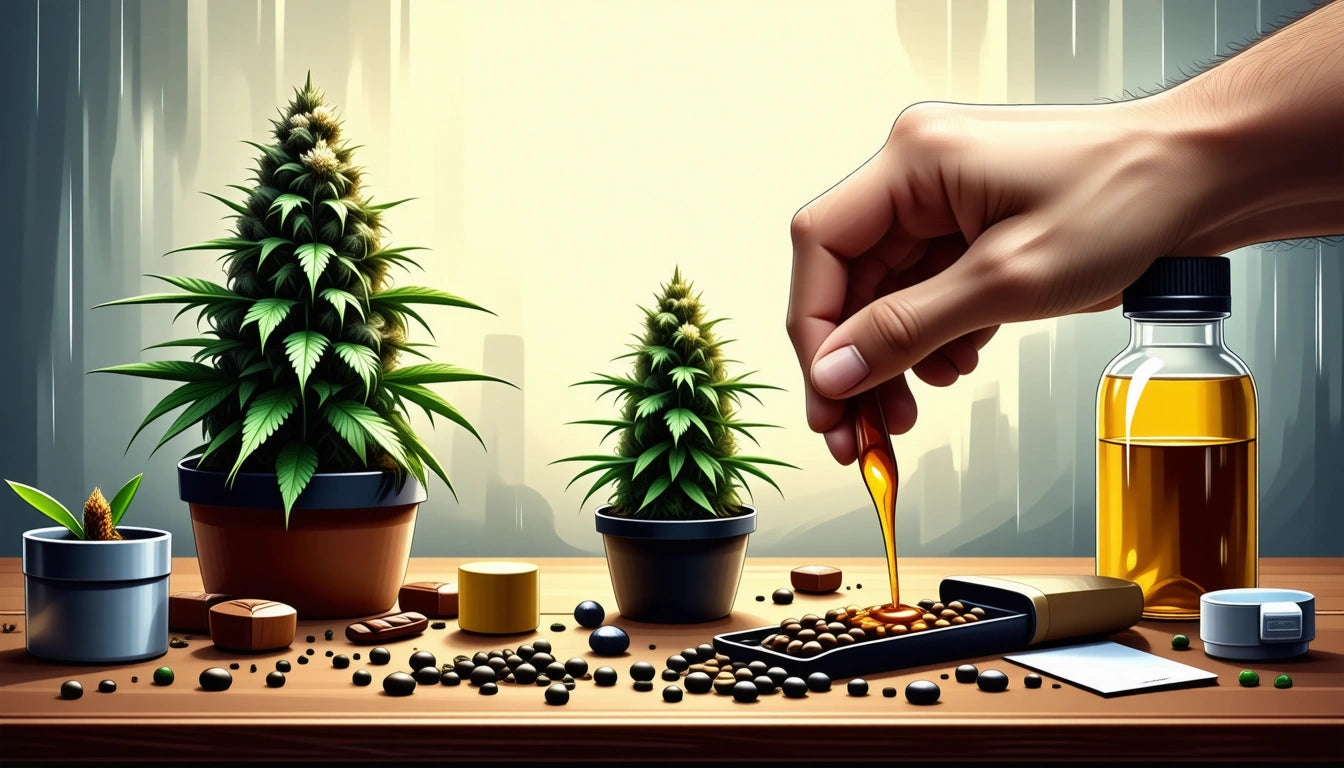- Understanding Foil Packaging in Cannabis
- Environmental Impact Analysis: The Full Picture
- Recyclability Challenges and Solutions
- Energy Consumption in Manufacturing
- Sustainable Alternatives to Traditional Foil
- Balancing Sustainability with Compliance Requirements
- Future Packaging Innovations: Where Sustainability Meets Functionality
Exploring the Environmental Trade-Offs of Foil Packaging
Cannabis brands face complex decisions when selecting packaging materials that balance product protection, regulatory compliance, and environmental responsibility. Foil packaging, with its excellent barrier properties and shelf appeal, presents both advantages and significant ecological considerations. Understanding these trade-offs helps brands make informed decisions that align with sustainability goals while meeting market demands.
Understanding Foil Packaging in Cannabis
Foil packaging in the cannabis industry typically consists of aluminum foil laminated with plastic films or paper. These materials create an effective barrier against light, moisture, and oxygen, preserving product freshness and potency. The reflective properties of foil also contribute to brand visibility on dispensary shelves.
Common applications include:
- Mylar bags for flower products
- Foil-lined pouches for concentrates
- Blister packs for edibles
- Foil-sealed containers for vape cartridges
While these applications offer excellent product protection, they create several environmental challenges worth examining.
Environmental Impact Analysis: The Full Picture
The environmental footprint of foil packaging extends beyond the end-of-life considerations to include raw material extraction, manufacturing processes, and transportation impacts.
Raw Material Sourcing
Aluminum production begins with bauxite mining, which can lead to deforestation, soil erosion, and habitat destruction. The refining process is energy-intensive, though recycled aluminum requires only 5% of the energy needed to produce virgin material.
Carbon Footprint
The carbon emissions associated with foil packaging come primarily from energy-intensive manufacturing processes. However, the lightweight nature of foil can reduce transportation emissions compared to glass or rigid plastic alternatives.
Recyclability Challenges and Solutions
The complex composition of cannabis foil packaging creates significant recycling hurdles. Most foil packaging used in cannabis is actually metalized film (plastic with a thin aluminum coating) or multi-layer laminates that combine different materials, making separation difficult in conventional recycling streams.
As our detailed analysis of foil packaging shows, these composite materials often end up in landfills despite being technically recyclable. Consumers frequently misidentify these materials as pure aluminum foil, leading to contamination in recycling streams.
Energy Consumption in Manufacturing
The production of aluminum for foil packaging requires substantial energy inputs. Primary aluminum production consumes approximately 14 kWh of electricity per kilogram produced. This energy intensity contributes significantly to the material's environmental footprint.
However, innovations in manufacturing technologies are gradually reducing this impact. Energy-efficient smelting processes and increased use of renewable energy in production facilities help mitigate these concerns. Brands seeking to reduce their packaging footprint should inquire about their suppliers' energy sources and efficiency measures.
Sustainable Alternatives to Traditional Foil
Several alternatives offer similar protective qualities with improved environmental profiles:
- Biodegradable barrier films derived from plant materials
- Paper packaging with specialized coatings for moisture resistance
- Recyclable mono-material solutions that eliminate multi-layer complications
- Reusable containers with secure child-resistant closure systems that maintain compliance while reducing single-use packaging waste
Each alternative presents its own set of trade-offs in terms of cost, barrier properties, and regulatory compliance. For example, removing plastic windows from paper packaging improves recyclability but may impact product visibility and consumer appeal.
Balancing Sustainability with Compliance Requirements
Cannabis packaging must meet strict regulatory requirements, including child resistance, tamper evidence, and opacity standards in many jurisdictions. These compliance needs often conflict with sustainability goals.
For instance, child-resistant features frequently require additional materials or complex designs that complicate recycling. Brands must navigate these competing priorities by:
- Working with packaging engineers who specialize in sustainable compliance solutions
- Advocating for regulatory frameworks that consider environmental impacts
- Investing in consumer education about proper disposal methods
- Participating in industry-specific recycling programs
Future Packaging Innovations: Where Sustainability Meets Functionality
The cannabis packaging industry continues to evolve toward more environmentally responsible solutions without compromising product protection or regulatory compliance. Emerging innovations include:
Compostable barrier films that provide similar protection to foil laminates while breaking down in industrial composting facilities are gaining traction. Mono-material designs that maintain child resistance while improving recyclability represent another promising direction. Additionally, refillable systems with durable outer packaging and replaceable inner containers reduce overall material consumption.
Forward-thinking brands recognize that sustainable packaging is increasingly becoming a market differentiator. Consumers are growing more environmentally conscious, and packaging choices that reflect these values can strengthen brand loyalty and market position.
By carefully considering the full lifecycle impact of packaging materials, cannabis companies can make informed decisions that balance product protection, regulatory compliance, and environmental responsibility. The path forward requires ongoing innovation, consumer education, and industry collaboration to develop packaging solutions that minimize environmental trade-offs while meeting the unique needs of cannabis products.











Leave a comment
All comments are moderated before being published.
This site is protected by hCaptcha and the hCaptcha Privacy Policy and Terms of Service apply.